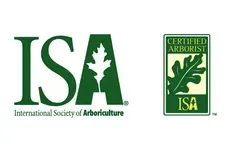Tree Pruning vs. Tree Trimming: What’s the Difference?
While the terms tree pruning and tree trimming are often used interchangeably, they serve different purposes in the care and maintenance of trees. Understanding the distinction between the two is essential for promoting long-term tree health, safety, and aesthetic appeal. In the heavily wooded areas of Northern Wisconsin—such as Boulder Junction and Manitowish Waters—proper tree maintenance is vital due to seasonal weather extremes and dense natural growth. Both pruning and trimming are crucial, but each technique targets different goals. This blog outlines the key differences between pruning and trimming, helping homeowners make informed decisions about when and why to invest in these services for their trees.
1. Purpose: Health vs. Appearance
Tree pruning primarily focuses on the health and structure of the tree. It involves removing dead, diseased, or structurally weak branches to encourage strong growth and reduce the risk of falling limbs. Trimming, on the other hand, is more about appearance and maintaining shape. It helps manage overgrown foliage that may interfere with views, structures, or pathways, ensuring the tree maintains an attractive form without compromising its health.
2. Tools and Techniques
Pruning often requires specialized techniques and tools, such as pruning shears, pole pruners, or saws, and is usually done with a focus on precise cuts at the correct locations to support healthy regrowth. Trimming is generally more routine and may involve hedge trimmers or loppers for quicker shaping. Both require skill, but pruning demands more in-depth knowledge of tree biology and growth patterns to avoid causing unintentional harm.
3. Timing and Frequency
The timing of tree pruning is typically seasonal, often performed during a tree’s dormant phase in late winter or early spring. This allows the tree to heal more efficiently and promotes strong spring growth. Trimming, especially for aesthetic purposes, can be done more frequently—often once or twice a year, depending on the tree species and desired look. Understanding when to prune or trim ensures optimal outcomes for both appearance and vitality.
4. Results and Long-Term Impact
The results of pruning are long-lasting and preventive, aiming to eliminate hazards and stimulate healthy growth. When done correctly, it can significantly extend a tree’s life and resilience. Trimming offers more immediate visual improvement but may not affect the tree's long-term health unless improperly performed. Regular trimming keeps trees looking neat, while strategic pruning helps ensure they remain strong and safe for years to come.
Knowing when to prune or trim a tree—and understanding the unique benefits of each—can make a significant difference in landscape health and safety. Both services are essential for maintaining the balance between aesthetics and longevity, especially in regions with dense forestation and seasonal weather challenges.
With 15
years of experience, Michlig Tree Service
serves Boulder Junction and Manitowish Waters, Wisconsin, offering
expert tree pruning and trimming services tailored to local environments. Our skilled team combines science, safety, and precision to ensure your trees thrive year-round, enhancing both property value and natural beauty.


